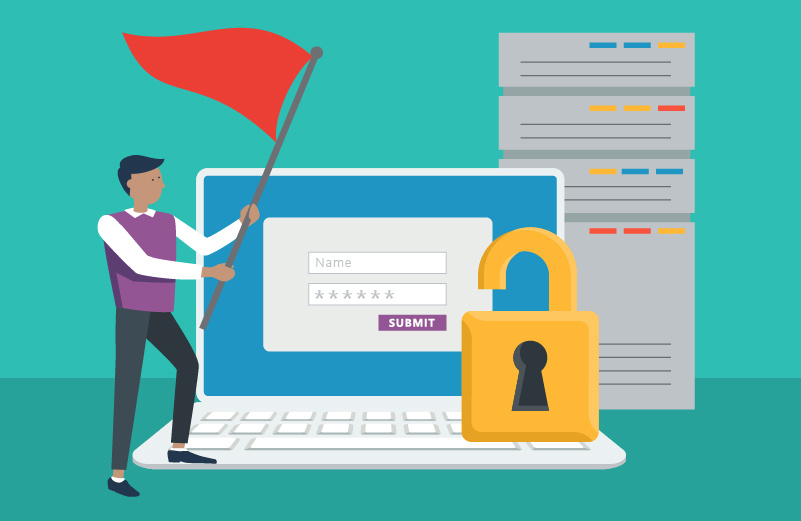A cybersecurity plan helps protect organizations from potential vulnerabilities. A vulnerability can be a data breach, phishing attack or another form of system exposure. It’s important to establish proper cybersecurity monitoring at your own organization, but equally as important, if not more, to verify a vendor’s cybersecurity posture is satisfactory. Evaluating their cybersecurity posture will help you discover any weaknesses, and if any are discovered, then know exactly what you need the vendor to do next to improve and strengthen their controls.
Cybersecurity Red Flags
As you review a vendor’s cybersecurity, plan to be on the lookout for:
- Inadequate testing. If you don’t see testing on the following vendor types, then that’s considered an issue with the vendor’s cybersecurity controls:
- Medium risk
- High risk
- Critical
- A vendor that processes, stores or transmits your data
Testing should include vulnerability, penetration and social engineering.
- Lack of security policies. It’s a red flag if polices are poorly documented, rarely updated or missing altogether. These include:
- Data retention and destruction policies
- Data classification and privacy policies
- Data encryption standards
- Network security policies
- Access management policies
- Incident detection and response plan
- Sensitive data has been exposed in the past. If the vendor has experienced a data breach in the past, that’s a red flag. Review the breach and fully understand the security measures they’ve put in place to help avoid it from happening again. In addition, write into the vendor contract a notification clause so that you’re securing in writing that you’ll be notified of a breach in an acceptable timeframe.
- There are no policies and procedures around the vendor’s employees, contractors or vendor management. The vendor should be certain their employees, contractors and their own vendors are properly trained and fully aware of the cybersecurity measures in place and precautions that should be taken. This includes things like:
- Hiring and background checks
- Annual privacy and security training
- Confidentiality agreements/non-disclosure agreements
- Third party risk management policy
- Loose protocols around shared accounts and password strength. If the vendor is allowing shared accounts like a shared username to log in to a platform or has weak password requirements, then a cybersecurity issue may arise that could have been easily prevented had the controls in place been stronger.
- Open firewalls and/or unpatched operating systems. Firewalls should be in place and systems should be patched often. This helps prevent exposure to vulnerabilities.
Remember, if you see any of the above, that’s a huge red flag and putting your organization at substantial risk. It’s critical you pinpoint cybersecurity issues as early as possible during your due diligence and request the vendor address concerns immediately.
Do you know how to handle it if your vendor does suffer a data breach? Download the infographic.






.gif?width=1920&name=Sample-Graphic-Animation%20(1).gif)



